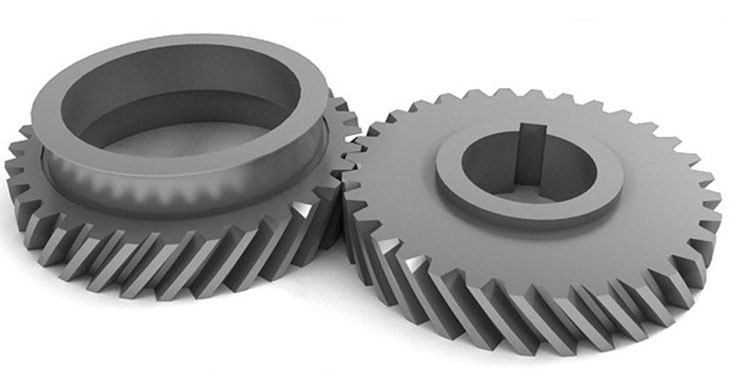
The helix angle is a critical parameter in the design of helical gears and significantly influences their performance characteristics. Analyzing helix angles is essential to achieve optimal helical gear designs that meet specific application requirements. Here are the key considerations when analyzing helix angles for helical gear designs:
1. Function of the Helix Angle:
- The helix angle determines the inclination of the gear teeth relative to the gear axis. It is a measure of how the gear teeth are arranged in a helical path along the gear’s circumference. The helix angle plays a crucial role in controlling the contact pattern, load distribution, and efficiency of the gear system.
2. Load Distribution and Gear Strength:
- A larger helix angle results in more teeth simultaneously in contact, spreading the load across a greater tooth width. This leads to improved load distribution and increased gear strength, making helical gears suitable for applications with high loads and torque requirements.
3. Sliding and Axial Thrust:
- Helical gears generate sliding motion between gear teeth during meshing due to their helix angle. While this sliding introduces additional friction, it also reduces axial thrust, which is beneficial in reducing gear end loads and the need for additional thrust bearings.
4. Noise and Vibration:
- The helix angle affects the smoothness of tooth engagement and disengagement, influencing noise and vibration levels. A lower helix angle can result in quieter operation due to reduced impact forces during gear meshing.
5. Efficiency:
- Helical gears generally have higher efficiency compared to spur gears, and the helix angle contributes to this efficiency. Properly selected helix angles can minimize sliding friction and energy losses during gear operation.
6. Backlash:
- The helix angle influences the amount of backlash in helical gears. A larger helix angle tends to increase backlash, which may need to be carefully controlled in some applications to ensure precise motion control.
7. Manufacturing Considerations:
- The helix angle affects the complexity of gear manufacturing. Higher helix angles may require specialized equipment for gear cutting, and this can influence manufacturing costs and lead times.
8. Application Requirements:
- The optimal helix angle depends on the specific requirements of the application. Factors such as load capacity, operating speed, noise level, and space constraints should be considered when selecting the helix angle.
9. Pairing of Helical Gears:
- When using helical gears in pairs (e.g., in gearboxes), it’s essential to ensure that the helix angles are matched. Pairs of helical gears with opposite helix angles are commonly used to cancel out axial thrust forces and minimize side loads.
10. Trade-offs:
- It’s important to note that changing the helix angle can lead to trade-offs in various performance aspects. For example, increasing the helix angle for improved load distribution may also increase sliding friction and impact noise.
In summary, analyzing the helix angle is a critical step in helical gear design to achieve optimal performance, load distribution, and efficiency. The appropriate helix angle is determined by considering various factors, including application requirements, load capacity, noise considerations, and manufacturing feasibility. By carefully selecting the helix angle, engineers can design helical gears that meet specific application needs and offer smooth, efficient, and reliable power transmission.
